Ocean Thermal Electric Conversion

Ocean Thermal Electric Conversion

Temperature differences, caused by differences in insolation both in latitude and in depth.
More promising technology is OTEC (Ocean Thermal Energy Generation). This takes advantage of the fact that the ocean is an enormous heat engine.
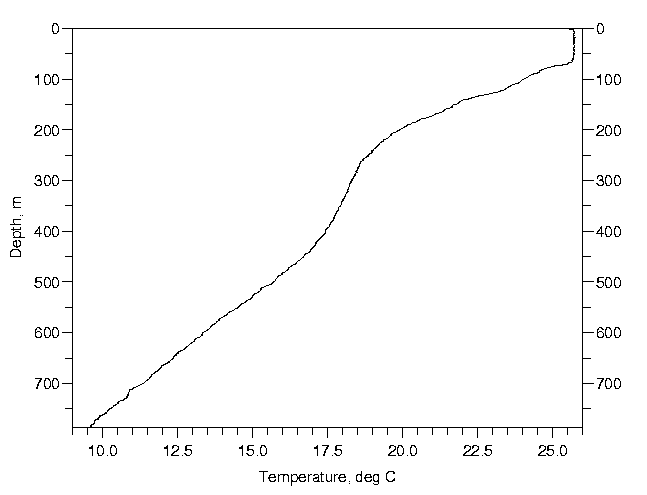
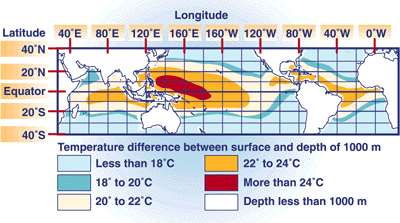
This in fact is a "global solution" and represents a chance for the world to collaborate on various infrastructure and production facilities.
To wit:
On an average day, 60 million square kilometers (23 million square miles) of tropical seas absorb an amount of solar radiation equal in heat content to about 250 billion barrels of oil.
If less than one-tenth of one percent of this stored solar energy could be converted into electric power, it would supply more than 20 times the total amount of electricity consumed in the United States on any given day.
Physics of Heat Engines:
Examples:
 eff = 1 - (273/373) = 27%
eff = 1 - (273/373) = 27%
 eff = 1 -(300/1000) = 70%
eff = 1 -(300/1000) = 70%
To get the highest efficiency one wants to maximize the difference between T1 and T2 but in most natural environments nature doesn't really do this.
Do this:
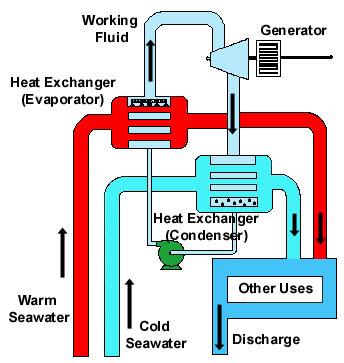

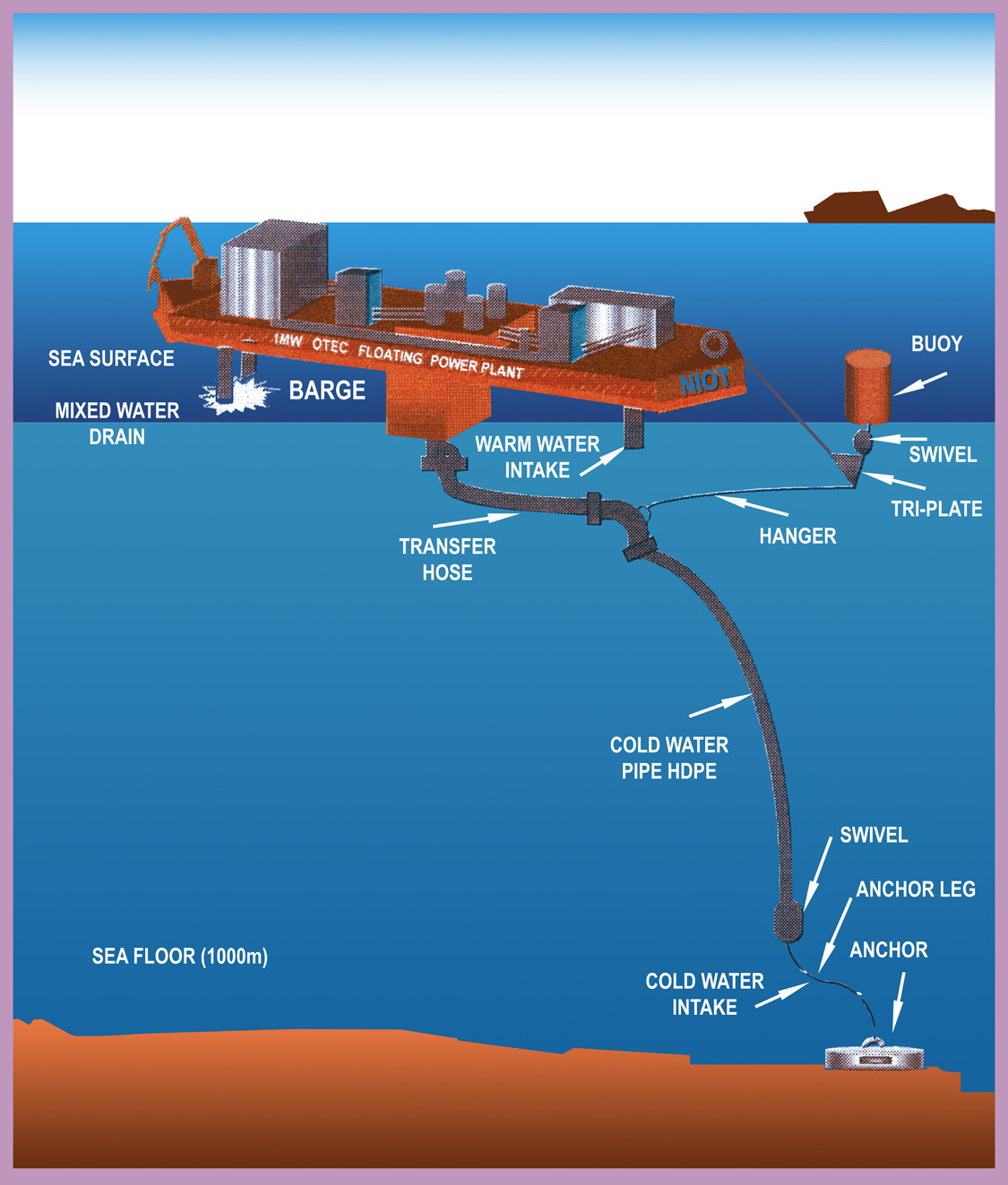
Basic principle is that heat difference is used to condense a steam into a liquid then return it to be reheated.
Since heat differences in the ocean will be smaller, then one must substitute ammonia for water as the working fluid.
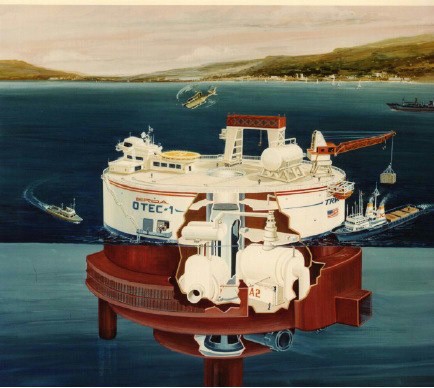
Example Calculations:
Possible Additional Benefits:
Above sites typically have thermal gradients higher then 22 degrees C
Energy extracted comes from the cooling of the warmer water  this is transferred to the ammonia which does the actual work
of turning the turbine (as ammonia steam)
this is transferred to the ammonia which does the actual work
of turning the turbine (as ammonia steam)
Energy extracted proportional to the volume of water and the temperature it drops.
Principal energy loss is when the warmer water meets the cooler water in the condenser.
Review of OTEC (Ocean Thermal Energy Conversion)

